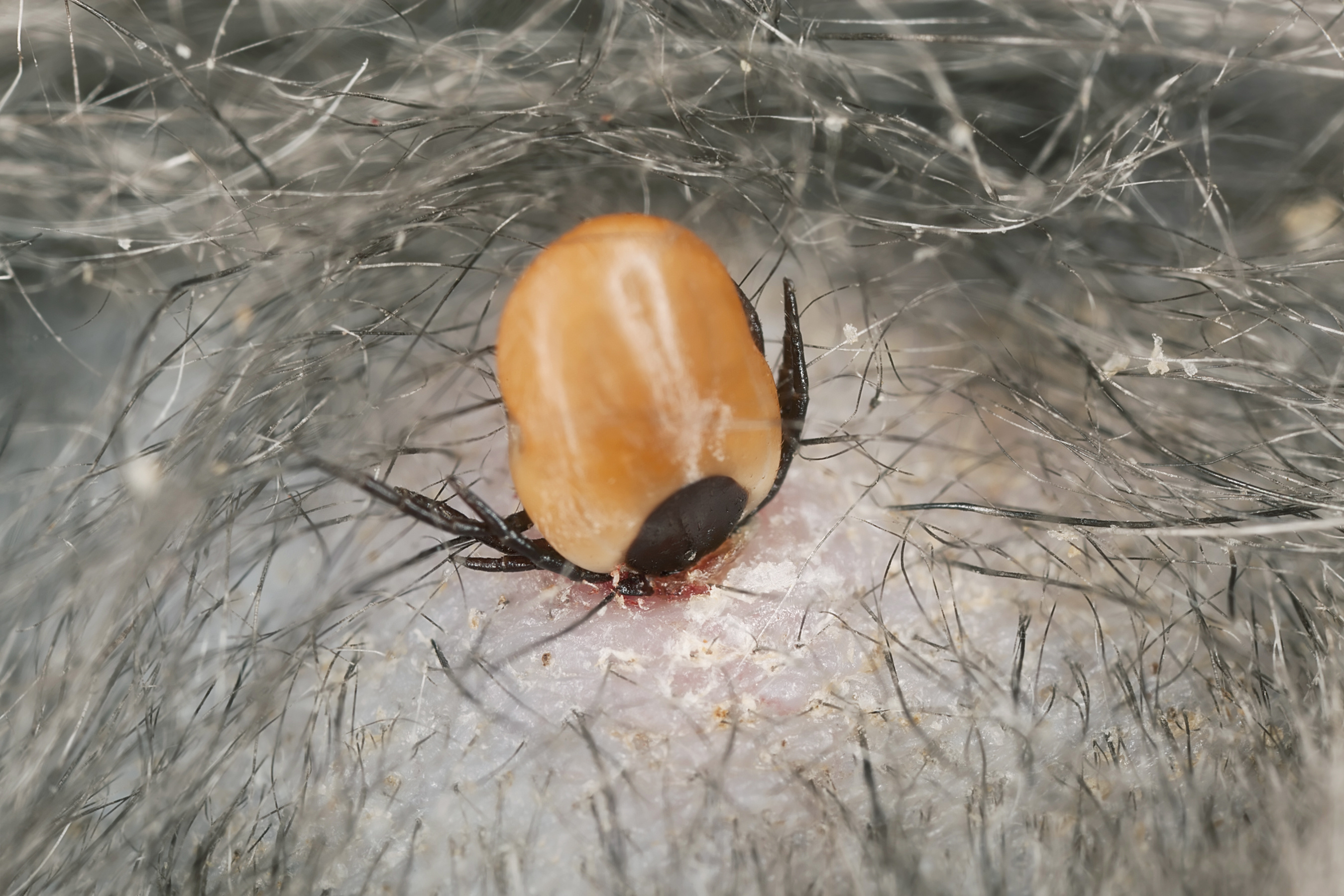
Tis the season for ticks and this means that it is time to begin thinking about the prevention of ticks and Lyme disease. While most people choose to go with the chemical tick and flea control treatments, there are harmful effects of chemical tick and flea control that are not talked about. That is why you want to be sure to investigate the natural alternatives to help keep your pet free of ticks.
What Do Ticks Do To Pets?
When a tick attaches itself to your pet, it begins feeding on its blood and can consume enough blood to cause anemia. The area around the bite can also become red and irritated. Ticks can be carriers of various pathogens and due to the fact that they consume blood, they can easily pass these into your pet. The most common pathogens these ticks are known for passing are Borrelia Burgdorferi, Bartonella, Ehrlichia, Babesia, and Rocky Mountain Spotted Fever. Borrelia Burgdorferi is the bacteria that can cause Lyme disease and result in swelling of the joints, pain, arthritis, and neurological issues….just to name a few. Rocky Mountain spotted fever can cause fever, lameness, and more. Some of the other co-infections can also cause a host of ailments including pain, confusion, loss of appetite, shortness of breath, depression, fever, and lethargy.
Harmful Effects of Chemical Tick and Flea Control
Some tick and flea control products that you apply to the skin of a pet can cause a reaction. These reactions can include anything from a mild skin irritation to seizures and even death of your pet. In addition, they are not good for the humans that are around your pet, as they are known carcinogens or cancer causing agents. Why would you put that on your pet? There are essential oils and other more natural alternatives to tick and flea control that is safe for your pet and for your family.
Natural Alternatives to Chemical Tick Control
By choosing to go with natural flea and tick control choices, you can protect your pet against the chemical side effects and your family as well. Some natural alternatives include:
Essential Oils for Tick Repellent.
There are several essential oils that can work for tick and flea prevention. You can use them alone or in combination to create your own tick and flea repellent. Here are the most common oils used:
- Geranium Essential Oil
- Juniper Essential Oil
- Rosewood Essential Oil
- Thyme Essential Oil
- Grapefruit Essential Oil
- Oregano Essential Oil
- Myrrh Essential Oil
- Palo Santo Essential Oil
- Purification Essential Oil
- ** Citrus and pine oils can be toxic to cats**
Essential Oils for Tick Removal.
These essential oils can be used by placing one drop of the oil directly on the tick and waiting until it releases its grip. If you cannot reach the tick, place the oil on a cotton swab and touch it to the tick. Here are the essential oils used for tick removal:
- Palo Santo Essential Oil
- Peppermint Essential Oil
- Cinnamon Bark Essential Oil
- Oregano Essential Oil
- Thyme Essential Oil
- Purification Essential Oil
∙Checking and removing ticks on a regular basis. Doing routine tick checks is important. To do this, run your hands across your pet’s body and visually look for any ticks that need removal. Don’t forget to check their belly and ears to. If you find a tick, use a pair of tweezers as close to the head of the tick as possible.
∙Look for a homeopathic flea and tick treatment. There are many companies that offer natural and homeopathic flea and tick prevention products if you do not want to make your own with essential oils.
If you want to keep your pet protected against ticks and fleas, but want to stay away from the chemicals, the natural alternatives are a great way to go. The many choices ensure that you will find the right one for you and your pet.
